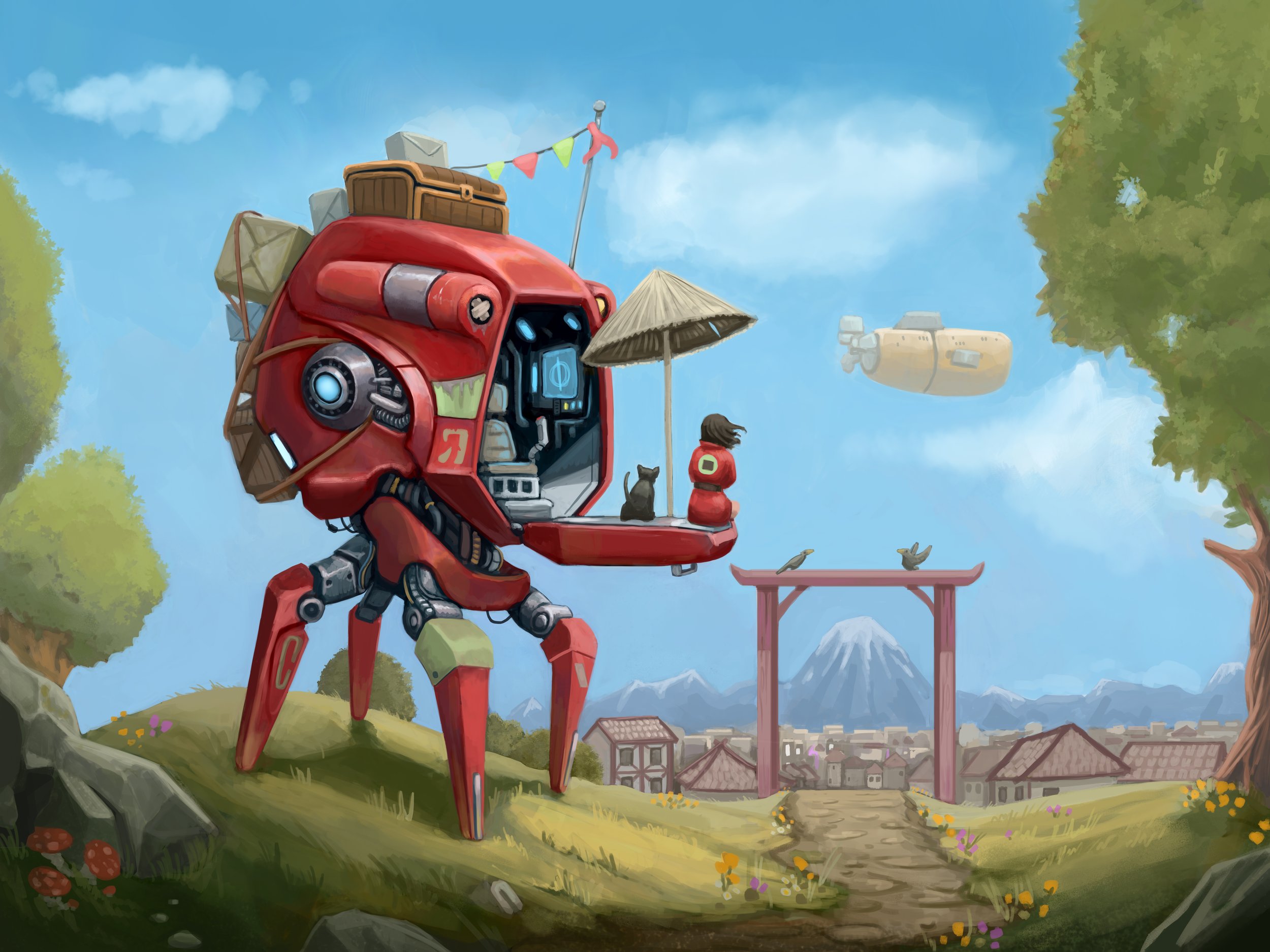Lunch Break (2021)
One of my earliest memories is what everyone in our family calls “The Explosion”. My grandmother told the story at every gathering—no Christmas dinner or family reunion passed without a telling…
BY RENÉE BONDY
IMAGE BY GREIG SANDERS
One of my earliest memories is what everyone in our family calls “The Explosion”. My grandmother told the story at every gathering—no Christmas dinner or family reunion passed without a telling, so I know every detail. I know The Explosion in my bones, the way the blast hit me square in the chest and my lungs ached for air in the empty silence that followed. How I was there but not there, how I saw but did not see.
Grandma told the story the same way each time. It happened in August, I was putting up butterbeans, she always began. And you know I always cook ’em real good, so they’re soft and sweet. I picked three or four big baskets that year, so you know it took me a while to get ’em ready. I always use the big cooker for butterbeans. And I know some that soak ’em overnight, but it’s enough to soak for an hour or so, just to draw the bitterness out. And I add salt, just a small handful. Some say salt will toughen the beans, but I think you need it for flavour. But that’s up to you. Once I set them to boiling, I got my jars ready and was counting out the seals and lids and dropping ’em into the kettle to sterilize. I was thinking about how I would keep some beans out for dinner to stew with a ham hock. That’s always Pop’s favourite. I could hear the beans boiling. That old cooker had a loud whistle, so you knew it was working good. I went down the cellar to get the ham hock and as I was coming back up the stairs, I heard a loud WHOOSH. And at first, I didn’t know what it was. I didn’t think it was the cooker, ’cause I always clamp the lid on good and tight. But when I got to the top of the stairs, that’s when the explosion happened. The lid flew off the cooker and hit the ceiling. It was the loudest thing you ever heard. Blew me clear off my feet! And there were beans everywhere! And do I mean everywhere!
My Lord, wasn’t I forever scraping beans off every surface of that kitchen. That old cooker never acted up before, I swear, but that day she just gave up the ghost. And all the beans ruined. Even after the big remodel we still found beans for years!
That Grandma was still scraping beans off surfaces in the kitchen years later was the inevitable punchline of the story. Explosions are lasting catastrophes.
Her story didn’t mention me, but when I was young, I would sometimes chime in, “And where was I?” And Grandma would say, “Oh, and you were out back on the picnic table with your colouring, you were. Wasn’t that a day!” And although I was a footnote, I was proud to claim even a small part in the story.
The story of The Explosion was legendary, made great through repetition. We never grew weary of hearing it, and Grandma never tired of telling it. Having heard it hundreds of times, we knew every detail of Grandma’s method for canning, and I’m sure the women in my family—and some of the men too, if they were so inclined – could put up butterbeans without a recipe. The Explosion is a dependable record. Unlike other stories, the kind that grow and become distorted, hyperbole found no fertile ground in its details. “I always clamp the lid on good and tight” she’d say, and I never doubted the fact.
Some stories change over time to retain their audience. We embellish them with glittery details, polish them to a pearly shine. But The Explosion didn’t need to be current or fancy—its simplicity and honesty are its charm. Even if I tried to tell it with more details–if I described the faded wallpaper and green gingham curtains, Grandma’s worn house apron, the clinging humidity of the summer day, the tobacco tin of broken crayons on the picnic table—these would just be frills. “Like putting a dress on a pig,” Grandma would say about people who tried to make things fancy that were better off plain. I pictured the pig in a satin slip dress, slippery and squealing in indignation as it broke free of grasping hands.
I was five when The Explosion happened, and I guess I’ve used it to mark time since. Nothing of significance had happened until that day, it seemed to me. That September I would start school, and for weeks before my mother said, “It’s a big day for you, the first day of school. A big day!” But I knew it couldn’t be bigger than “The Explosion”. Nothing could. Or so I thought.
The Explosion was a cautionary tale about the dangers of pressure cookers, but to my five-year-old ears it also warned of the threats lurking in the seemingly innocuous, the unavoidable perils hidden in the everydayness of things. For if an ordinary August morning and the most mundane of tasks could result in such catastrophe, really anything could happen. Anything at all. Danger hid in every room of every house, every school, every church. Mostly, such threats were unnamed and dormant. But every so often they revealed themselves, usually subtly, to one person rather than a crowd. The Explosion was the stuff of legend, but most dangers were much quieter—and best kept that way.
Pop seemed to know that, too. The audience for The Explosion were usually my aunts and younger cousins, once the washing up was done, the women would go sit on the patio outside the kitchen and drink tea. The men gathered in the shed after dinner, and sometimes Pop would come up to the house for a box of matches or to retrieve a case of beer from the cellar. If Grandma was regaling us with The Explosion, Pop would shake his head, his expression indecipherable. I wondered if he doubted Grandma’s version—maybe he thought she hadn’t fastened the lid on the cooker properly, or she set the flame too high. Or perhaps he simply didn’t trust the method itself, figuring the pressure cooker posed a danger no matter how careful the operator. Pop was a cautious man, a man who took his time and said little, and The Explosion was a story of recklessness and risk.
As I grew, I knew danger waited everywhere, even inside the body. After school, as I ate apple slices and watched reruns of The Brady Bunch, commercials warned of “Heart Disease: The Silent Killer”. The heart could attack, could betray even the most careful person. It happened all the time. I held my hand over my heart to feel its racing shu-shu-shu-shu… “Give now,” the commercial said. “But what, and to whom?” I wondered.
The dangers of the body are worst of all, for who knows what lies deep within? On our fourth-grade field trip to The Museum of Man, I was mesmerized by a model of a skinless human with its red and blue tributaries and rivulets, its striations and distortions. I knew it was made of plastic, but it seemed to throb with life. “Even as I speak, Medical Science is unlocking the mysteries of the body,” the guide told us. I wondered if it was a good idea, unlocking those mysteries. Some things are best hidden under the skin. If I closed my eyes when Grandma told her story, I could still feel the reverberations of the blast, way deep inside, and how it felt when The Explosion sucked the air from my lungs.
I know I’m not the only person who marks time with stories. Events punctuate our lives like commas and semicolons. But now and again something happens that warrants a full stop. A theft. An assault on the body. A great loss. Sometimes, stopped dead in our tracks, we’re silenced. Even if I wanted to tell all my stories, they are in a state of limbo, between the happening and the telling, between body and voice. And the body holds them safe, absorbs the pain and shock and reverberations, preserves the echoes of the blast.
Renée Bondy is a student in Humber’s Creative Writing graduate certificate program. She is a regular contributor to the Canadian feminist magazine Herizons, and her essays have appeared in the online journal Bearings and on CBC Radio. She is at work on her first novel.
Image: Lunch Break by Greig Sanders
Edited for publication by Stephy Desir, as part of the Professional Writing and Communications Program.
HLR Spotlight is a collaboration between the Faculty of Media & Creative Arts and the Faculty of Liberal Arts & Sciences and Innovative Learning at Humber College in Toronto, Ontario. This project is funded by Humber’s Office of Research & Innovation.

